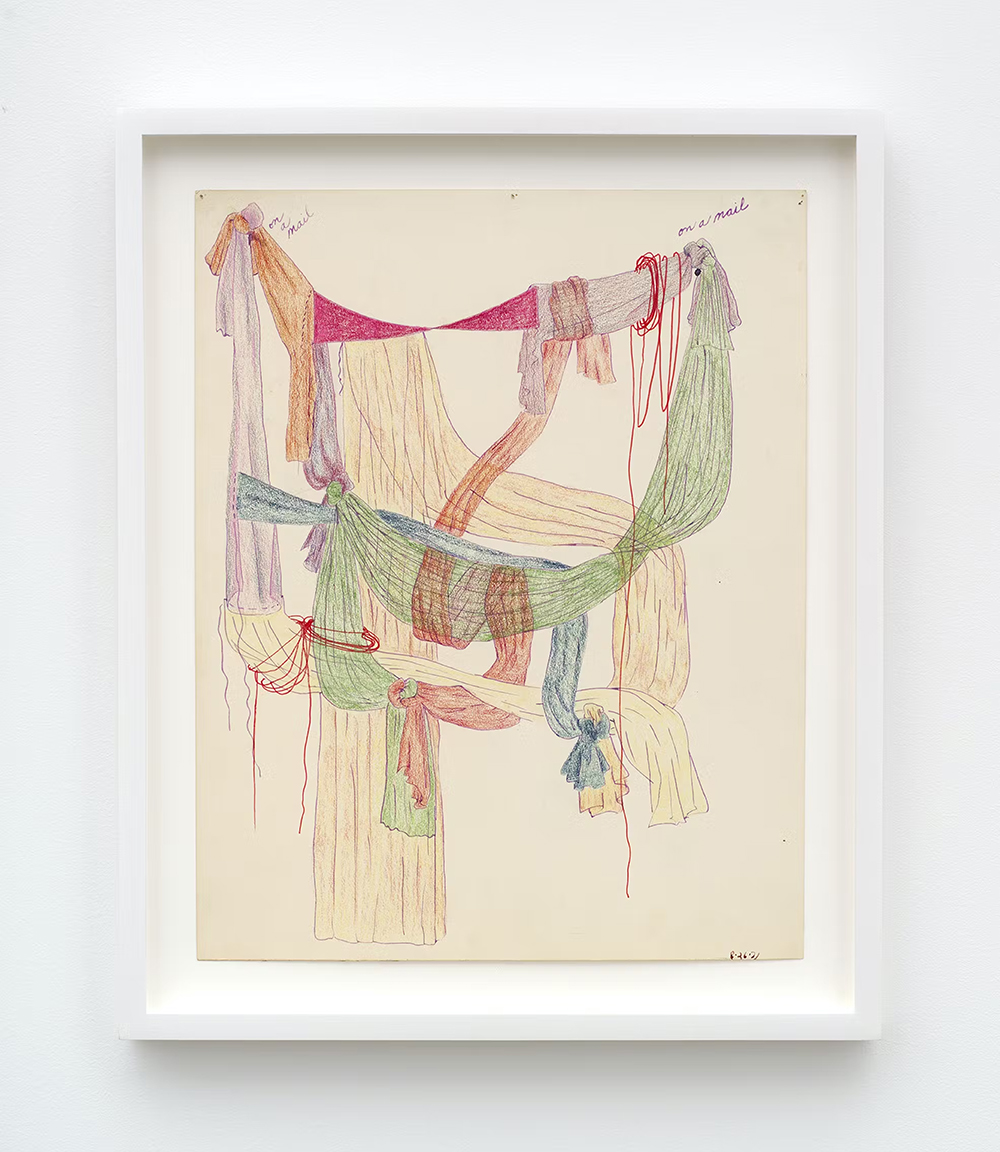Your cart is currently empty!
Rosemary Mayer Hannah Hoffman; Marc Selwyn Fine Art

The act of writing is a process of appropriations. Words predate the user, who then borrows and deploys them. With each new text, these tools of communication are shuffled to embody another of their possible sequencings, attempting to connect the writer to their audience—and thus to find a shared interpretation of the world around them. Artist Rosemary Mayer, in “Noon Has No Shadows” at Hannah Hoffman and Marc Selwyn Fine Art, used words among other readymade materials to create sculptures and works on paper that convey this same sense of social intimacy to the viewer while also memorializing the artist’s friends, her family and the fleeting ecstasy of a life lived in celebration of the ties that bind humanity.
This exhibition unfolds across two gallery spaces on different sides of Los Angeles. Each layout emphasizes groupings of the distinct bodies of work that Mayer made at different stages of her life. The earliest work in “Noon Has No Shadows,” made in the early 1970s, is a series of colored pencil drawings on paper that function as proposals for the artist’s signature soft sculptures. Sketching allows her to create fantastical draping structures that are unencumbered by gravity as they float on the center of each sheet. The fictional fabric folds of Untitled (8.27.71) (1971) droop lazily and exquisitely. These works, like their correlating actualized sculptures, are references to Mannerist paintings from 16th-century Italy. For instance, Mayer’s Portae (1974) was inspired by Rosso Fiorentino’s Volterra Deposition (1521), expressing the kinship she felt with artists of this period. Mayer saw similarities between her time, coming just after Minimalism, and the Mannerists who worked in the aftershock of the Renaissance era.

In the 1980s, Mayer made several temporary monuments. Some of the works on paper exhibited here, in reference to Mayer’s overnight performance Moon Tent (1982), at the home of art historian Robert Hobbs, are tokens of these ephemeral artworks and times shared with friends. This jovial spirit washes over the viewer as it ripples out from Moon Tents for Autumn Moon (1982), with colorfully drawn phrases such as “Can you stay up late?” and “Have you got the time?” These phrases glorify the pleasurable, though occasionally mundane, moments that occupy our days.
NO MORE MONEY (1983) is a drawing of a salmon-colored starfish flanked by the aggressively capitalized titular phrase. By combining text and image, Mayer achieves a perfect cacophony with a deeply humorous impact. It is as if the artist is reaching through the space of the paper to remind the viewer that levity and humor can be coping mechanisms in the face of hardship. Whether we are broke or trying to subsist under capitalism.Hey, look—a starfish.